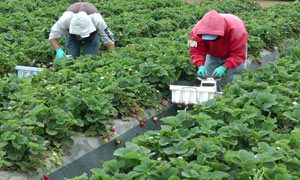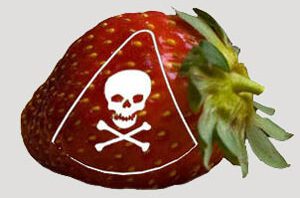Paul Towers, Pesticide Action Network,
ptowers@panna.org 916-216-1082
Tracey Brieger, Californians for Pesticide Reform
tracey@pesticidereform.org 415-215-5473
August 7, 2012
State Kicks Off Effort to Create Safe Strawberry Fields
Expert Panel Meets for First Time to Create Plan to Help Farmers Transition Away from Hazardous Pesticide Fumigants & Protect Health
Advocates Urge State to Create Comprehensive Plan for Transition that Addresses Financial Barriers
SALINAS, CA – Tomorrow, five months after methyl iodide was pulled from the market in Calfornia, an expert panel will gather to plan next steps for advancing safe strawberry farming. In particular, the panel is focused on helping strawberry growers transition off of all methyl-iodide-like fumigant pesticides and towards safe and sustainable alternatives. The expert panel’s mandate is to create a five-year action plan for fumigant transition that could have big impacts on the state’s strawberry industry – responsible for 85% of the country’s berries.
“Once again California is on the forefront of sustainable agriculture. The panel has a unique opportunity to spur innovative farming in the state,” said Margaret Reeves, PhD, a senior scientist at Pesticide Action Network. “The shared goal of safe strawberry fields rests not only on cutting-edge technologies, but also on making farming affordable and accessible.”
The California Department of Pesticide Regulation will convene a panel of experts starting tomorrow—including academic specialists in economics and agricultural production, farmworker safety specialists and business leaders—who will review alternative technologies to soil fumigant pesticides, as well as the economic and production-level barriers to farming without fumigants, and create a five-year plan to transition California away from most uses of fumigants in strawberry production.
Soil fumigants are applied at very high rates per acre and are readily transformed into a gas, making them difficult to control and prone to drift away. As a result, rural families and farmworkers throughout California face some of the greatest direct threats of exposure from these chemicals. In addition, fumigants reduce farmers’ options to manage pests because they “sterilize” the soil, killing beneficial organisms in the soil that form the basis of naturally resilient farming systems.
Current and emerging alternatives to fumigants include the use of disease-resistant cultivars, solarization, steam treatments, crop rotations, use of green manures, biofumigation with mustard seed meals, and anaerobic soil disinfestation.
Farmers and environmental advocates acknowledge barriers to safe strawberry farming, in addition to the need for new technologies. They are urging the panel to evaluate ways to remove structural barriers to change, including crop insurance and land access while also supporting efforts to pilot the use of available buffer zones for experimentation.
“California has five years to invest in farmers and small businesses that will help agriculture transition off pesticide fumigants,” said Tracey Brieger, co-director of Californians for Pesticide Reform, a coalition of over 185 organizations and a letter signatory. “We can’t continue to use these hazardous pesticides that damage soil and poison our air.”
Fumigants have come under increasing scrutiny in recent years. Methyl bromide is slated for phase-out in 2015 under an international treaty agreement, and in response, conventional pesticide manufacturers have attempted to market highly toxic fumigants as replacements for methyl bromide, including Telone, chloropicrin and metam sodium. However, these other fumigants have several restrictions on their use due to known health and environmental effects.
According to state officials, while the panel will conduct closed-door sessions, results from the meeting are expected to be shared after the last meeting in November, and the formal plan will be presented in February 2013.
# # #







